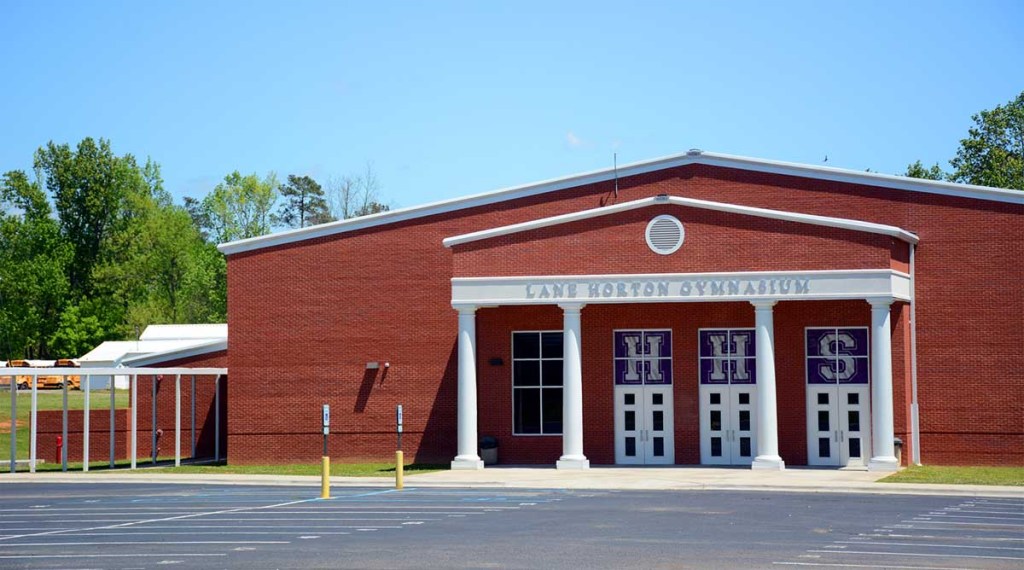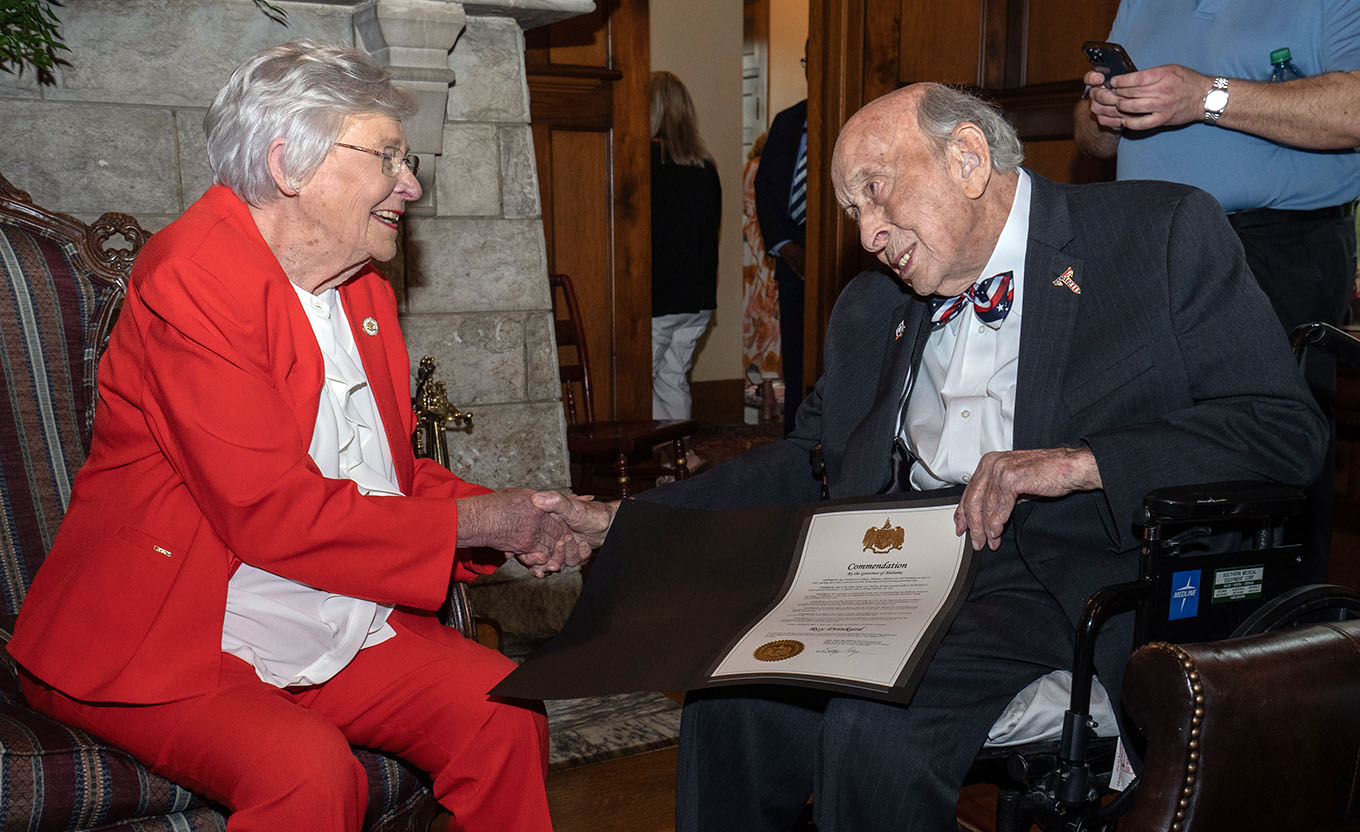Five years later, Hanceville tornado brings back emotions
Published 5:15 am Sunday, April 24, 2016

- Lane Horton Gymnasium is seen Saturday afternoon in Hanceville.
HANCEVILLE — While visiting with a Cullman attorney recently, Kenneth Nail thumbed through The Cullman Times’ “Day of Destruction” photo book of the April 27, 2011 tornadoes.
It was the first time he had seen it, and the pictures took him back to that horrible, but character-defining time five years ago.
Trending
“It was the best and worst time to be mayor,” Nail said. “I didn’t realize how emotionally I was still tied to that tornado. It had such a psychological impact on anyone that went through it. It brought people together. That’s what I remember from it, so much togetherness, neighbors helping neighbors.”
Cullman County’s tornado sirens began ringing out in Hanceville shortly before 6 a.m. as what would become an EF-2 tornado touched down east of Cold Springs and began hurling its way northeast, picking up windspeed and strength.
Nail and his family took shelter in their home.
“I had never been in a tornado before,” he said. “I was afraid it was going to blow the house off its foundation.”
Outside, 120-mph winds ripped the roof off Lane Horton Gymnasium at Hanceville High School. The force bent eight metal power poles over their base at Wallace State Community College and tore metal roofing from several campus buildings.
It blew the windows out of a mid-rise under construction but only caused minor damage to a nearby high-rise building. The connected construction crane remained standing.
Trending
South of town, several large pine, poplar and other hardwood trees were snapped and collapsed onto the densely packed houses below. Downtown building were also damaged.
As the storm moved through, Nail’s police radio scrambled to life. A tree had collapsed on Officer Troy Harvell’s patrol car on U.S. 31 South, trapping him inside. As Nail ventured outside, he saw toppled trees all over his neighborhood, and he soon realized he, too, was trapped.
Miraculously, no one was killed from downed trees in the residential city core. Eric Alred’s family escaped death after a huge tree feel through the center of his home on Tennessee Avenue.
“His daughters would have been killed if they had been where that tree came through,” Nail recalls.
In pouring rain, Nail managed to get back to City Hall where he began organizing police, public works and firefighters to help residents who were trapped or injured and to start clearing streets.
“Our goal was to get at least one lane of traffic open to every street for every resident, and at 7 p.m. that evening, we accomplished that.”
Crews returned the next day, focused on getting two lanes open and clearing more debris.
“Our employees worked 12-hour days for 26 straight days,” Nail said. “After that, we went back to normal schedules because I felt they had already pushed themselves as hard as they could go. At that point, it was all we could physically and mentally take.”
In all, the city removed 250,000 cubic yards of fallen trees and other vegetative debris. And it did it cheaply, at $8.50 per yard, compared to $50 per yard by the Army Corps of Engineers, Nail said.
“We didn’t sit down in the corner and wait for FEMA to come help us. We did it ourselves,” he said. “But you know, through all of it, I didn’t hear one complaint. People knew we were doing our best to clean up. People were going down the street helping other people, handing out water or bringing them sweet tea. That’s why I say it was the best and worst time to be mayor. I was so proud to see how we all responded.”
Hanceville would be a prelude to what would come later in the afternoon.
The powerful storm system would ravage the Tennessee Valley in three separate waves. The first occurred during the early morning hours, roughly between 2-8 a.m., the second during the late-morning to early afternoon and finally the third and most devastating wave during the afternoon and evening hours. When the final wave moved through, it would spawn the most violent and destructive tornadoes in recent decades.
When the day was over, two Cullman County residents lost their lives: Keenan Johnathan Sullivan, 20, in Johnson’s Crossing and Lloyd Winford Harris, 68, of Simcoe.
Lane Horton Gym was replaced with a state-of-the-art facility opening in August 2013. Hanceville now has three community storm shelters, one located behind City Hall, another behind C.W. Day Park and a third beside the Hanceville Senior Center, all funded by federal disaster funds.
See The Times’ Wednesday edition for more on the 5-year anniversary of the April 27, 2011 tornadoes.
* At 5:48 a.m., a weak tornado touched down east of Cold Springs, toppling and snapping numerous trees. It damaged several sheds before crossing Alabama Highway 69 where it damaged a large shed. As it moved northeast, it snapped trees along County Road 46 and damaged several chicken houses, causing some to collapse.
* After crossing Interstate 65 south of Dodge City, it tore through more chicken houses and trees, increasing in strength as it approached Wallace State Community College in Hanceville where winds were estimated to peak at 120 mph (EF-2 intensity).
* After battering Hanceville, the tornado continued its track northeast, nearly running parallel to Alabama Highway 91. Between Center Hill and Walter, it snapped and twisted large hardwood trees and nearly destroyed a barn along CR-645. Part of a residential shelter or shed was destroyed and a portion of a chicken house badly damaged.
* The tornado caused additional damage along CR-1742 and CR-1753, northeast of Holly Pond, and along U.S. 231 in extreme northeast Cullman county. This damage is considered to part of the same storm complex that rolled across the area in early April 27, however there is too much distance between damage points for it to be considered a long track tornado.
* At 6:20 a.m, the tornado finally ended after cutting a 30-mile path of destruction that was a half-mile wide.
Source: National Weather Service’s Huntsville Office





